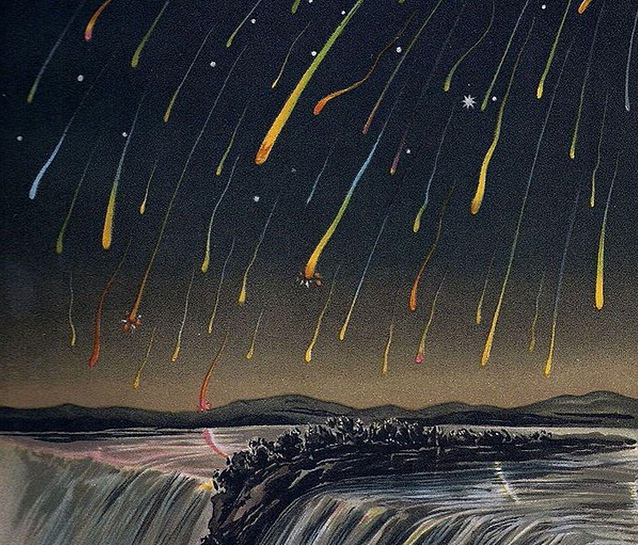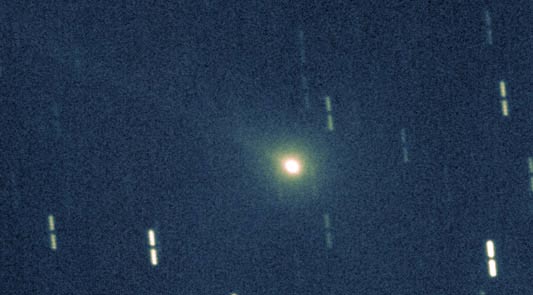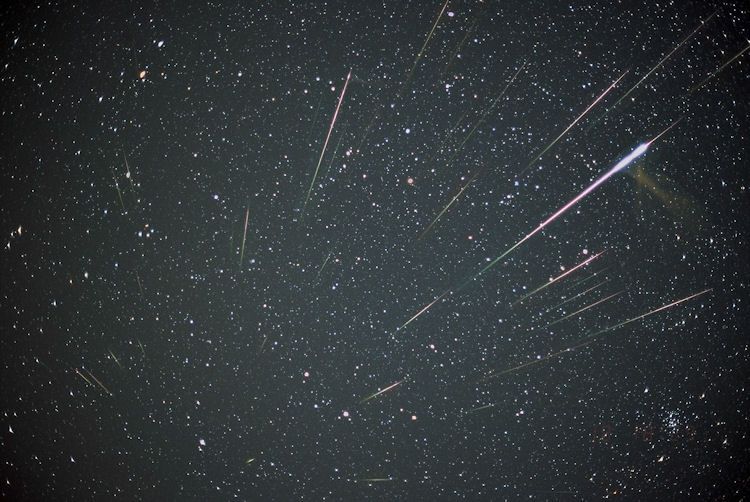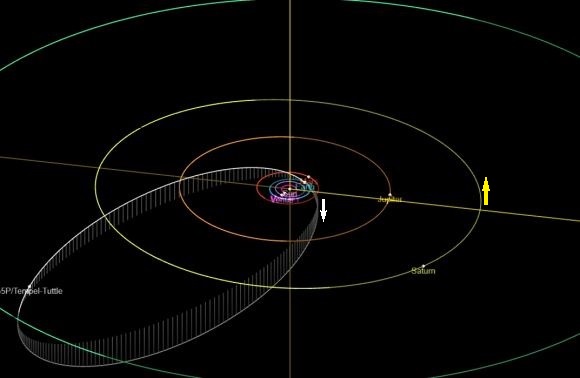Astronomers have long refuted the terrible scenes of “rocks from the sky” that should accompany meteor showers. In fact, meteors are overwhelmingly so small that when they enter the earth’s atmosphere, they completely evaporate from the heating that occurs when they collide at high speed with atmospheric gas molecules. But with the beginning of the space age, the concept of meteor danger has gained a new dimension. Now, satellite operators and crews of the International Space Station must take into account all the more or less powerful meteor swarms through which our planet passes every year. And the most dangerous of them are the Leonids — they are active almost all of November, and their maximum falls on the 17th-18th.
This shower was formed by the Tempel-Tuttle comet (55P/Tempel-Tuttle), discovered at the end of 1865, but historians were able to find descriptions of its earlier appearances in ancient chronicles. Especially interesting was its visit in 1366, when it flew 0.0229 AU (3.4 million km) from the Earth. Only two “tailed stars” in historical times came closer to us. Interestingly, the diligent Chinese chroniclers who left us the memory of this event did not note any increased meteor activity during the same period. Although, according to other sources, powerful Leonid showers in mid-November have been observed for about 900 AD.

In the XIX century, the Leonids very “loudly” reminded of themselves. The event of 1833, when more than a hundred thousand “falling stars” could be seen within an hour, was remembered for a long time by contemporaries. It became a source of inspiration for many artists and writers, and actually gave impetus to the development of meteoric astronomy. The inhabitants of North America were especially lucky then. Slightly less impressive “showers” with a capacity of several thousand meteors per hour took place in November 1866 and 1867. It was then that the Italian astronomer Giovanni Schiaparelli, who later became famous for his “discovery of Martian channels”, suggested the connection of these phenomena with the recently discovered comet: it had a rotation period of about 33 years, and with the same interval there were flares of Leonid activity. Later, this assumption was brightly confirmed (unlike the famous “Martian channels”).
Two subsequent appearances of 55P/Tempel-Tuttle turned out to be unfavorable, so it was not observed, being classified as lost. The Leonids did not remind of themselves in any special way. Every year at the peak of their activity, they produced several dozen meteors per hour, although in 1899 and 1933 this number grew to several hundred. It was only in 1965 that the comet was rediscovered thanks to the calculations of the German mathematician Joachim Schubert. And on November 17, 1966, a real “meteor storm” with a capacity of about 30 thousand per hour could be seen in the Western Hemisphere.

As it became clear from further studies, the densest part of the Leonid swarm is significantly lagging behind in its orbital motion from the “parent” comet. Therefore, the activation of the shower mimics its return to the Sun. The same thing happened at the turn of the millennia: the passage of a comet approaching the Earth at a distance of 0.356 AU (53.3 million km) occurred in early 1998, and in 1999, 2000 and 2001, astronomers observed showers with an hourly number of meteors from two to five thousand.

In 1998, this shower caused the postponement of the launch into orbit of the base module of the International Space Station. The fact is that the orbit of comet Tempel-Tuttle is inclined to the ecliptic at an angle of almost 173°, that is, this comet rotates in a direction almost opposite to the movement of the large planets. Therefore, the dust particles ejected by it come into contact with the Earth “on opposite courses” and enter the atmosphere at a speed of 72 km/s. This means that they have high kinetic energy. Even a tiny particle of dust that moves so fast can form a bright meteor or pierce the body of a spacecraft. Don’t forget, too, that satellites in low Earth orbits have a speed of almost 8 km/s, and it, too, under certain circumstances, can “add up” with a speed of. All this raised concerns about the fate of humanity’s largest space outpost. However, further studies showed that the hazard assessment turned out to be exaggerated, since the spatial concentration of meteor particles did not reach critical values. Although every year on the eve of November 17, the ISS crew receives additional warnings about possible actions in case of an emergency.

The next return of the Tempel-Tuttle comet is expected in 2031, and by that time the Leonids are unlikely to bring us any surprises in the form of unexpected flares of activity. Now, at the maximum of this shower, astronomers regularly register about 20 fast meteors per hour — of course, if the capricious November weather allows it.
Follow us on Twitter to get the most interesting space news in time
https://twitter.com/ust_magazine

